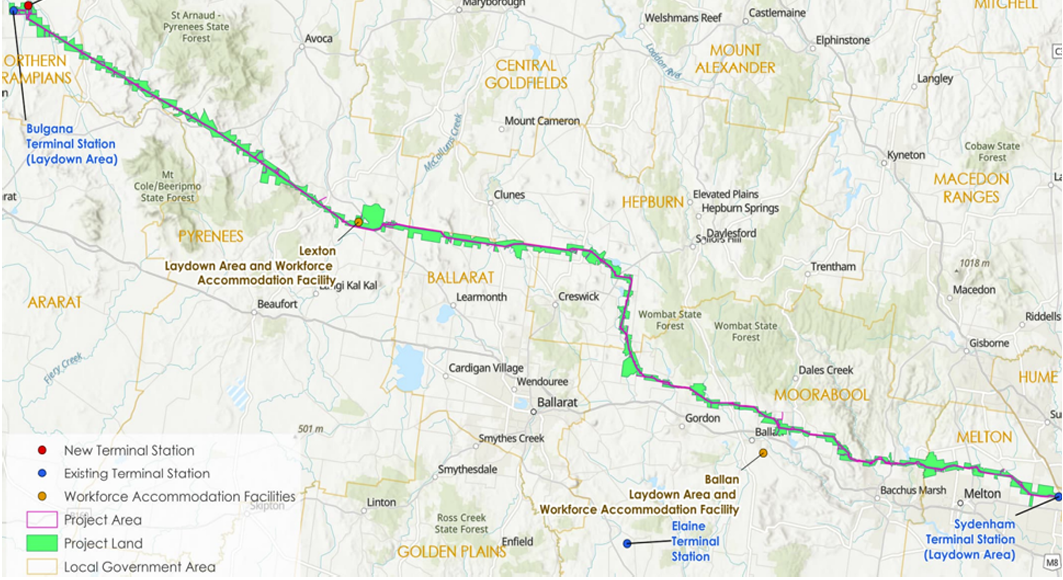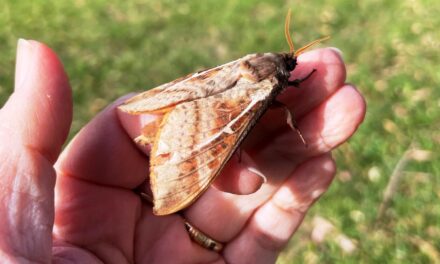Hepburn Shire Council has been granted an extension until September 8 to submit a full response to the Environmental Effects Statement (EES) for the proposed Western Renewables Link (WRL). According to agenda papers for next week’s ordinary meeting, Council will lodge a provisional “holding submission” on 25 August to alert key stakeholders and the Inquiry and Advisory Committee about its principal concerns and to signal possible adjustments ahead of the final version.
The council’s provisional submission underscores its opposition to the WRL in its current overhead configuration, flagging multiple unresolved issues that it has raised since May 2021 via letters to AEMO, DELWP, and various ministers.
Key Council concerns which will be elaborated in their submission to the AEMO are outlined in the draft holding document:
- Tourism and Heritage Impact:
The council warns that overhead infrastructure would adversely affect tourism in Hepburn Shire and broader region, and pose a risk to the UNESCO Victorian Goldfields World Heritage bid—a project backed by 15 councils, Dja Dja Wurrung Clans Aboriginal Corporation, Heritage Victoria, and others. That bid is expected to generate an additional $25 million in annual visitation. - Bushfire Risks and Emergency Response:
Concern is raised over increased bushfire danger due to infrastructure failure or smoke-induced arcing. The overhead towers would also create “no-go” zones, potentially hampering both ground and aerial firefighting efforts. - Visual and Cultural Amenity:
The proposal would degrade local amenity—impacting the visual quality of heritage and cultural landscapes and affecting daily life for residents and visitors. - Prime Agricultural Land:
The line would cut through highly productive Class 1 agricultural land—the Central Highlands food bowl—threatening productivity by restricting irrigation, tractor use, and other essential farming processes. - Biodiversity and Habitat Fragmentation:
The risk of aerial strikes to native species such as brolga, wedge-tailed eagles, and black swans is highlighted, alongside concerns about fragmenting key habitat corridors. - Land-Use Compatibility:
Council emphasises the need to minimize land-use conflicts—protecting agriculture and ensuring the infrastructure can integrate more sensitively within existing uses. - Social Impacts and Community Opposition:
A clear statement of strong community opposition is noted, including calls for underground cabling. Council warns that ongoing resistance could lead to delivery delays, added costs, and difficulties securing land access or social licence. - Call for Undergrounding:
Underscoring its stance, Council states that the WRL must be delivered underground if it proceeds at all, outlining multiple benefits such as:- Improved reliability and resilience against bushfires and severe weather;
- Elimination of fire-ignition risks and improved emergency access;
- Reduced ecological impact by coupling cabling along roadways;
- Eradication of visual disruption, preserving tourism and amenity;
- Mitigation of post-construction land-use conflicts.
- Draft Planning Amendment Issues:
The council raises concerns that the proposed Specific Controls Overlay (Schedule 8) is overly broad—requiring all planning permit applications in the area to be referred to AusNet or to the Planning Minister, potentially exceeding the project’s actual footprint.
Council underscored its climate credentials, noting its proactive involvement with the Z-Net pilot and its long-standing commitment to 100% renewable energy—spanning stationary energy, transport, agriculture, waste, and land-use innovation. However, it said that the WRL, in its present overhead form, fails to provide a quality renewable outcome and may ultimately do more harm than good.
With both 220 kV and 500 kV transmission lines proposed to traverse its territory, Hepburn Shire is among the most deeply impacted municipalities, affecting some of the most valuable agricultural land in Australia.
A formal, detailed submission will be lodged by 8 September 2025, expanding on and potentially revising these points in response to any new information or stakeholder input.
This article is based on documents in the agenda and papers for the ordinary meeting of Hepburn Shire Council on Tuesday, August 26.





